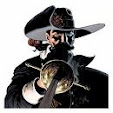We have written in former posts about two queens of Castile with English origins, Catherine of Lancaster and Eleanor of England. We will write now about Victoria Eugenie Julia Ena of Battemberg (1887-1969) Queen consort of Spain (1906-1931).
Victoria Eugenie was the daughter of Prince Henry of Battenberg and Princess Beatrice, daughter of Queen Victoria I of Great Britain. She married Alfonso XIII, King of Spain on May 31, 1906. A terrorist threw a bomb to the royal carriage killing 22 people. Although the kings were unharmed, the bride's gown was stained with blood.
When Victoria and Alfonso got married, they were in love, but Victoria passed hemophilia on several of her children what clouded the happiness of the couple. The queen stood her marital problems with dignity and was dedicated to altruistic work. She accompanied the king in every official act without being herself betrayed by the distance existing between them. Once in exile, after losing the monarchy in 1931, they lived together never again.
They had seven children, being Juan, one of the younger, who inherited the dynastic rights. He gave up in favour of his son Juan Carlos, now King of Spain, in 1977.
Ena died in Lausanne in 1969. In 1985 her remains were moved to the cemetery of the monastery of El Escorial (Madrid).
Spanish Television issued an excellent program about Victoria Eugenia, in the series ‘Women in History’. It is available on RTVE website. Click here to start playing.
Victoria Eugenie was the daughter of Prince Henry of Battenberg and Princess Beatrice, daughter of Queen Victoria I of Great Britain. She married Alfonso XIII, King of Spain on May 31, 1906. A terrorist threw a bomb to the royal carriage killing 22 people. Although the kings were unharmed, the bride's gown was stained with blood.
When Victoria and Alfonso got married, they were in love, but Victoria passed hemophilia on several of her children what clouded the happiness of the couple. The queen stood her marital problems with dignity and was dedicated to altruistic work. She accompanied the king in every official act without being herself betrayed by the distance existing between them. Once in exile, after losing the monarchy in 1931, they lived together never again.
They had seven children, being Juan, one of the younger, who inherited the dynastic rights. He gave up in favour of his son Juan Carlos, now King of Spain, in 1977.
Ena died in Lausanne in 1969. In 1985 her remains were moved to the cemetery of the monastery of El Escorial (Madrid).
Spanish Television issued an excellent program about Victoria Eugenia, in the series ‘Women in History’. It is available on RTVE website. Click here to start playing.
 |
| Mujeres en la Historia. Victoria Eugenia de Battemberg |
Victoria Eugenia era hija del príncipe Enrique de Battemberg y de la princesa Beatriz, hija de la reina Victoria I de Gran Bretaña. Se caso con Alfonso XIII, rey de España, el 31 de mayo de 1906. Un terrorista lanzó hacia la carroza real una bomba que mató a 22 personas. Aunque los reyes salieron ilesos, el traje de la novia se manchó de sangre.
El matrimonio de Victoria y Alfonso fue por amor, pero el problema de haber transmitido a varios de sus hijos la hemofilia enturbio la felicidad de la pareja. La reina soporto con gran dignidad los problemas matrimoniales y se dedico a labores altruistas. Acompañó al rey en todos los actos y no dejo traslucir la lejanía que existía entre ellos. Una vez en el exilio, tras caer la monarquía en 1931, jamás volvieron a vivir juntos.
Tuvieron siete hijos siendo Juan, uno de los menores, quién heredó los derechos dinásticos. En 1977 renunció a ellos en favor de su hijo Juan Carlos, actual rey de España.
Victoria Eugenia murió en Lausana en 1969. En 1985 sus restos mortales fueron trasladados al panteón del monasterio de El Escorial (Madrid).
Televisión Española emitió un excelente programa dedicado a Victoria Eugenia dentro de la serie Mujeres en la Historia. Está disponible en la web de RTVE. Haga clic aquí para comenzar a reproducirlo.
Related links / Enlaces relacionados
Victoria Eugenia de Battemberg (Mujeres en la Historia. RTVE.es A la carta)
Victoria Eugenia de Battemberg (Wikipedia en español)
Victoria Eugenie of Battenberg (Wikipedia in English)
Catherine of Lancaster, Queen of Castile
Catalina de Lancaster, Reina de Castilla
Leonor de Inglaterra, Reina de Castilla / Eleanor of England, Queen of Castile
Other posts including references to the Queen Vitoria Eugenie
History of Sucina and Hacienda Riquelme. The railway station
Casilda Figueroa y Alonso Martínez, Duchess of Pastrana
Otras entradas que incluyen referencias a la Reina Victoria Eugenia
Historia de Sucina y H. Riquelme. La estación de ferrocarril
Casilda Figueroa y Alonso Martínez, Duquesa de Pastrana







.jpg)



No hay comentarios:
Publicar un comentario